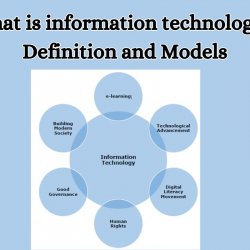What are the 4 states of quantum computing?


What are the 4 states of quantum computing?
Understanding Quantum Computing
Quantum computing is a buzzword that is becoming increasingly popular in the world of technology and science. It refers to the use of quantum mechanics to perform complex calculations and solve problems faster than traditional computers. In this blog, we will explore the concept of quantum computing and break down the four states that make it possible.
First, let’s start with the basics. Quantum computing is based on the principles of quantum mechanics, which studies the behavior of matter and energy at a very small scale. These qubits can exist in multiple states at once, allowing for parallel processing and increasing computational power.
Now that we have a brief understanding of quantum computing let’s dive into the four states that make it work. The first state is superposition, which refers to the ability of qubits to exist in multiple states at once. This means that one qubit can represent many more possibilities than a bit in a traditional computer, making it more efficient for solving complex problems.
The second state is entanglement, which describes the correlation between two or more qubits. When two or more qubits are entangled, their states will change simultaneously regardless of distance. This allows for faster communication between qubits and makes it possible for them to perform parallel computations.
The third state is interference, which plays a crucial role in quantum computing by combining multiple probabilities to provide an accurate result. Traditional computers use Boolean logic to calculate outcomes, whereas quantum computers use interference to calculate probabilities and choose the most likely outcome.
Overview of the 4 States of Quantum Computing
- Quantum Superposition:
- Description: Classical computers use bits that can exist in one of two states: 0 or 1. Quantum computers, on the other hand, use qubits (quantum bits) that can exist in multiple states simultaneously. This phenomenon is known as superposition.
- Significance: Superposition allows quantum computers to perform many calculations at the same time, potentially providing a significant speedup for certain types of problems.
- Quantum Entanglement:
- Description: Entanglement is a quantum phenomenon where qubits become correlated with each other in such a way that the state of one qubit is directly related to the state of another, regardless of the distance between them. Changes to one qubit will instantly affect the other.
- Significance: Entanglement enables quantum computers to establish connections between qubits that classical computers cannot achieve. It is a crucial resource for quantum computing algorithms and helps in improving computational efficiency.
- Quantum Interference:
- Description: Quantum interference is a phenomenon where the probability amplitudes of different quantum states can either reinforce (constructive interference) or cancel out (destructive interference) each other. This interference is a result of the complex nature of quantum probability amplitudes.
- Significance: Quantum algorithms are designed to leverage interference to amplify the correct solutions to a problem while canceling out incorrect ones. This is a key aspect of quantum algorithms, such as Shor’s algorithm for factoring large numbers and Grover’s algorithm for searching an unsorted database.
- Quantum Measurement:
- Description: Quantum measurement is the process by which the quantum state of a qubit is determined. Measurement collapses the qubit’s superposition of states into a definite classical state (0 or 1).
- Significance: Quantum algorithms often involve manipulating qubits in superposition and using interference to perform calculations. The final step in a quantum computation involves measuring the qubits to obtain the result. The outcome is probabilistic, and the probabilities are influenced by the quantum states’ amplitudes.
The Importance of Superposition in Quantum Computing
- Parallelism: Superposition allows quantum computers to perform many calculations at the same time. While a classical computer would need to perform calculations sequentially, a quantum computer with qubits in superposition can explore multiple possibilities in parallel. This potential for parallelism is a key factor in the speedup that quantum algorithms can offer for certain types of problems.
- Exponential Speedup: The number of possible states that a quantum system in superposition can represent grows exponentially with the number of qubits. For n qubits, there are 2^n possible combinations of classical bits that the quantum system can represent simultaneously. This exponential growth is a powerful advantage for certain quantum algorithms, such as Shor’s algorithm for factoring large numbers and Grover’s algorithm for searching an unsorted database.
- Probability Amplitudes: Superposition introduces the concept of probability amplitudes, which are complex numbers associated with each possible state of a qubit. These amplitudes influence the probability of obtaining a particular measurement outcome when the qubit is measured. Quantum algorithms are designed to manipulate these amplitudes to enhance the probability of obtaining the correct solution and decrease the probability of incorrect solutions through interference.
- Quantum States and Entanglement: Superposition is often intertwined with another quantum phenomenon called entanglement. Entanglement allows qubits to become correlated in ways that classical bits cannot, and it enables quantum computers to establish connections and relationships between qubits that classical computers cannot achieve.
Real-world Applications of Quantum Computing with 4 states
- Cryptography:
- Application: Quantum computers could potentially break widely used cryptographic systems, such as RSA, by efficiently factoring large numbers using algorithms like Shor’s algorithm. Conversely, quantum cryptography offers the promise of secure communication channels through the use of quantum key distribution (QKD) protocols.
- Optimization Problems:
- Application: Quantum computers have the potential to solve optimization problems more efficiently than classical computers. This includes applications in logistics, supply chain management, financial portfolio optimization, and scheduling.
- Machine Learning and Data Analysis:
- Application: Quantum computers could enhance machine learning algorithms by efficiently processing large datasets and exploring multiple possibilities simultaneously. Quantum machine learning algorithms aim to provide a speedup in tasks such as pattern recognition and optimization.
- Drug Discovery:
- Application: Quantum computers may help simulate and analyze molecular interactions more accurately, enabling faster drug discovery and development. Quantum algorithms could explore the vast solution space of molecular structures and properties more efficiently than classical methods.
You can also read:
skillslash data science reviews






Ingen kommentarer endnu